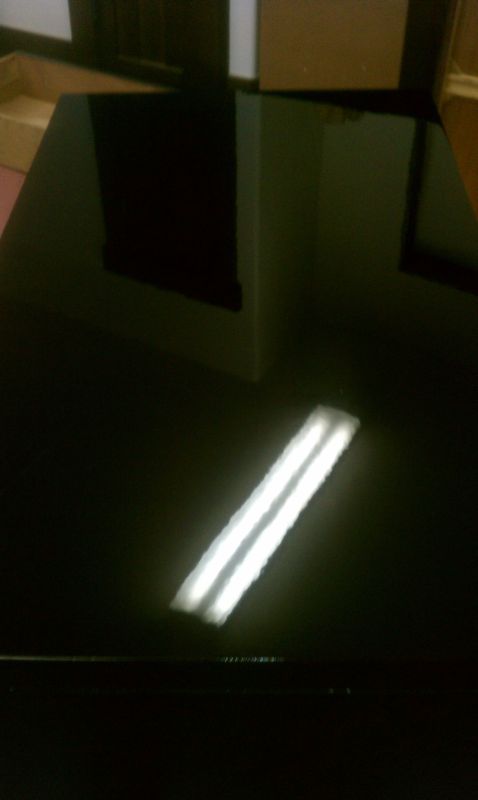Q.
I just finished spraying a large desktop. I had to hang it vertically and shoot it in my garage because it would not fit into my loft finishing area. I laid down 5 coats of Target Coatings 9000 WB poly satin (scuff sanding in between). I went with all satin because the goal is a very mellow look. This product does not crosslink.
Given the size of the desk, I have yet to lie on a perfect coat. So there are some rough spots here and there. I need to smooth out the entire top, but given it is already satin, I'm not sure how to do it. I do not want a flat pore-filled look, so cutting back with Abralon is out of the question. I could sand it and lay on another coat, but the desk is just too big for me to get it perfect. Some rubbing will be necessary.
Forum Responses
I don't understand why cutting back with Abralon is out of the question. I'd give it a good sanding with a random orbit sander and P500 paper to flatten it out. This is something you cannot do with Abralon, as it is too flexible. Shoot another coat, coming from the top down, using a single pass to avoid overspray. Follow that up with Abralon P1000 to remove the nibs, followed by Abralon P2000 to give it a nice satin shine. Then paste wax and a good buffing with a power buffer and a lamb's wool bonnet. It should then look marvelous. Even better, it should feel great.
Bob Niemeyer, forum technical advisor
If not, try the old paper bag trick. Take a grocery bag and crumple it up and rub with the grain. Providing you do not have sand in the finish and the finish is reasonably cured, this works wonders. Paper has a fiber grit of about 2000.
Bob is right about finishing in the morning or late evening. I do some of my best conference table work at about midnight on a Saturday with a Monday morning delivery. You can also spray the floors and walls of the booth with clean water with a little dishwashing soap in it.
When I have to do one I either do it late at night after everyone has left the shop or very early before anyone comes in. All the dust has had a chance to settle by then. I wipe down the surface first with VM&P naptha and a clean cotton cloth, followed with a tack cloth, then last and most important as I wipe with the tack cloth, I rub my hand over the surface to see if there is still dust or grit.
Some days static will cause the dust to settle back on as fast as you wipe it down. Filter all material through the finest cone filter it will go through. I double strain. After spraying, LEAVE the area and don't look back--everywhere you step you raise dust. I also use a cup gun with clean water and lightly mist the entire area before spraying. Be prepared to wet sand and do it again.
CV is not a good choice here due to the mil thickness issue. You need a coating that can have a lot of mil film thickness and not shatter. Most shops do not even like to bid on such projects because of the inherent difficulties. High-gloss buffed finish is a no-brainer in comparison.
Most of the roughness was caused by my inability to lay down an even coat across the length of it. I simply could not keep the gun at an even distance and speed when I had to take a step to move down the desktop.
Conventional guns just don't cut it for large surface areas like this. This table went to the customer as is. When I had to do another one, I called a Kremlin rep and asked him for an Airmix demo for a few days.
